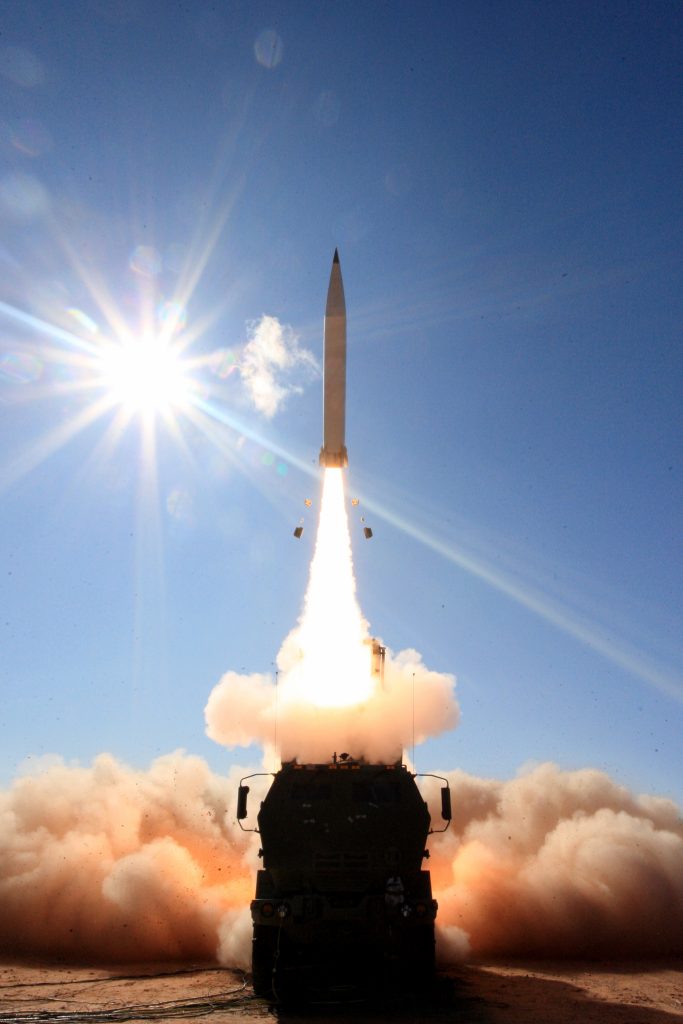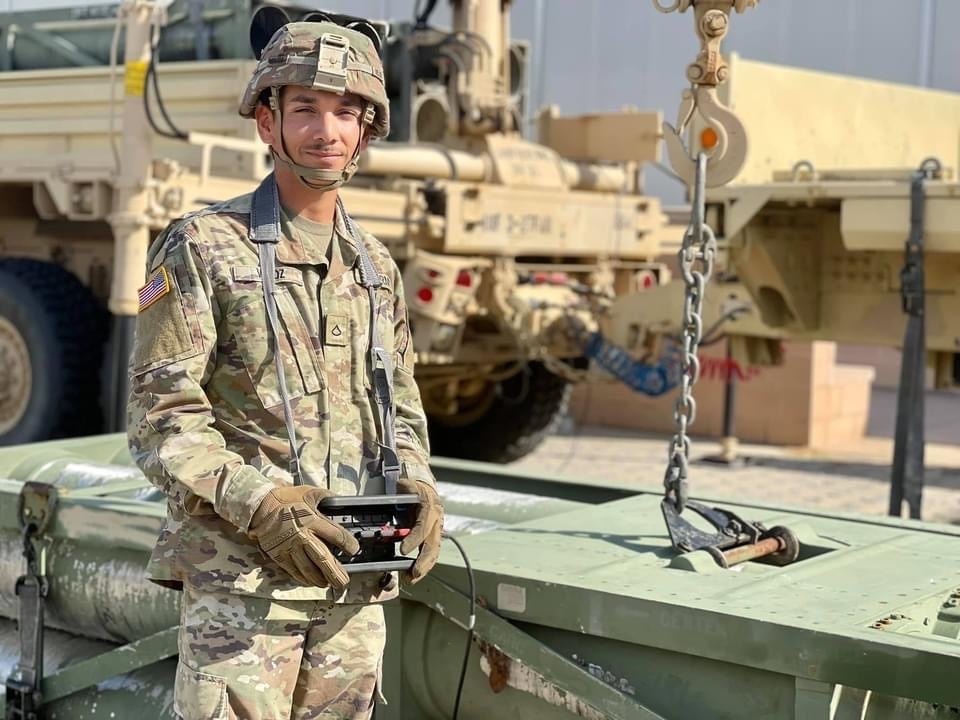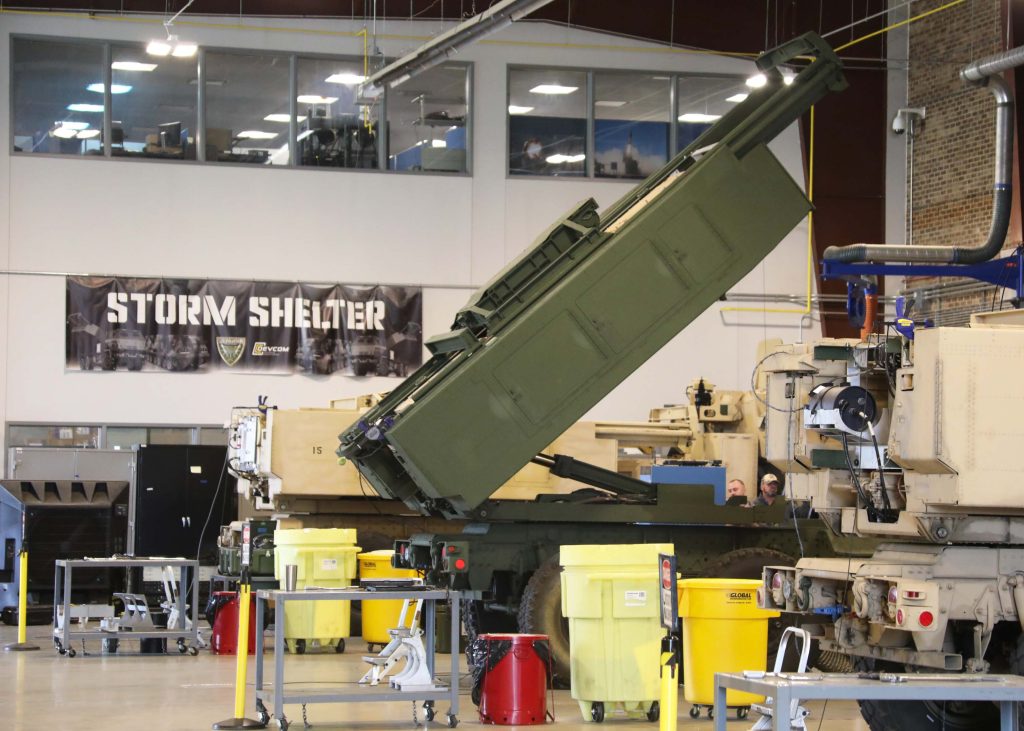
TROOP TRAINING: Soldiers receive additional HIMARS launchers and training from the STORM Project Office. (Photo by 1st Lt. Kendra Thomas, 18th Field Artillery Brigade)
SOFTWARE, LAUNCHED
The future is now, and the future of Army modernization is an Agile software system.
by Katie Davis Skelley
A pivotal software acquisition for the U.S. Army’s number one modernization priority, Long-Range Precision Fires (LRPF), is the High Mobility Artillery Rocket System (HIMARS)—to provide an all-weather, indirect, service point targets and area-fire weapon system to strike counter fire, air defense, armored formations and other high-payoff targets at all depths of the tactical battlefield.
In 2018, the launcher software data rights transitioned from contractor developed and owned to 100 percent government-owned by the Strategic Operational Rockets and Missiles Project Office (STORM), being designed and developed by the U.S. Army Combat Capabilities Development Command Aviation and Missile Center (DEVCOM AvMC) at Redstone Arsenal, Alabama.
“Any new capability that requires integration with the HIMARS, such as new munitions, new communications systems, any type of interoperability—the U.S. government now has the rights to all of the HIMARS software data and test environments,” said Amber Marsh, software sustainment division chief for the DEVCOM AvMC Software, Simulation, Systems Engineering and Integration (S3I) Directorate. “Right now we are performing launcher software updates to support new munitions, which include Precision Strike Missile [PrSM], one of the Army’s top LRPF programs.” What this achieves for the Army is a faster, more cost-effective way of modernizing its technology, to meet current and future threats on the battlefield.

ROCKET AT THE READY: An M142 High Mobility Artillery Rocket System launches a Precision Strike Missile Dec. 10, 2019, at White Sands Missile Range, New Mexico. HIMARS is one of the Army’s front-running munitions that addresses Long Range Precision Fires. (Photo courtesy of White Sands Missile Range)
(Photo by White Sands Missile Range)
RE-ARCHITECTED, RE-DESIGNED AND READY TO GO
Since 2019, HIMARS has supported PrSM during its development flight tests, successfully launching the next-generation munition to its extended ranges and targeted impacts. DEVCOM AvMC conducts system and testing under controlled conditions, using interoperability modifying the HIMARS launcher software for compliance with message protocols of the PrSM munition, and the digital command and control, Advanced Field Artillery Tactical Data System with interface control specifications.
System and software engineers at AvMC re-architected and re-designed the HIMARS launcher software, adopting an open system architecture and modern design that enables them to upgrade and add capabilities, without the traditional limitations of its previous design. Throughout development, the Army conducted Soldier touch points and user juries to ensure maximum usability and functionality for the warfighter. Soldier feedback identified which operations the user performed most frequently, then the software interface was designed so that the keys or buttons for these operations would be readily available on the home screen. Feedback also included using green, yellow and red colors to aid the user with both operational and caution alerts.
“We updated the user interface from a human factor standpoint as the software intuitively guides the Soldier through the conducted mission,” said Marsh. “We strive to make the interaction with the software as easy and intuitive as possible for the end user.”
HIMARS will share a commonality of hardware and software with the tracked Multiple Launch Rocket System M270A1/A2 by using its redesigned software for the Common Fire Control System. The result will be 85 percent of the software being reused across the HIMARS and M270A1/A2 launcher platforms, further reducing the cost for the Army to maintain, while increasing the capability of both weapon systems. The software is designed with a modular architecture to support scalability and future modifications.

FIELDING UPGRADES: The S3I Directorate fields the Universal Fire Control System version 7.11B and 8.2 software upgrades to more than 40 U.S. Army, Marine Corps and National Guard Multiple Launch Rocket and HIMARS units. (Photo by 1st Lt. Kendra Thomas, 18th Field Artillery Brigade)
COST SAVING SOLUTIONS
The government-developed, designed and owned software solution reduces life cycle costs at a rate of approximately $12 million per release—a sizable amount of cost savings for the Army, when it is noted that software is released every 18-24 months. The AvMC team uses Agile and Development Security Operations (DevSecOps) principles to make launcher software updates, which enables rapid delivery of capability to the Soldier through flexible contracts that focus on iterative feedback loops with direct customer and user involvement, while applying rigor through DevSecOps automated testing to produce software that is safe, survivable and relevant in today’s mission field.
“We are currently in the middle of fielding updates for the HIMARS software to Field Artillery Soldiers and Marines in the field,” said Michael Murray, lead, Operations, Fielding and Training lead for DEVCOM AvMC S3I. “They are already proficient with the current launcher software, and the latest software update enables units to employ the Insensitive Munition Propulsion System rockets. “The differences the user will see in the updated Fire Control System software is minimal as the software internal handles the operations to launch the new rockets.”

BALLISTIC BAY: The HIMARS system resides in a high bay at the DEVOMC AvMC at Redstone Arsenal, Alabama. (Photo by Haley Myers, DEVCOM AvMC Public Affairs)
CONCLUSION
This year alone, Murray and his team are fielding launcher software upgrades to more than 40 U.S. Army, Marine Corps and National Guard units along with Army pre-positioned stock sites worldwide. Soldiers are receiving hands-on, over-the-shoulder training from experts who have been in the field as former launcher crewmembers.
However, as the Army transitions from the current universal configuration to the Common Fire Control System, there will be additional capabilities in the hardware and user interface requiring Soldiers to gain a new understanding and familiarity with the changes.
“There will be an initial learning curve and some differences in the way the software looks to them,” Murray said. “There’s going to be more technology for the Soldier to learn, but the good news is that for every version of tactical software we release for the launcher, we also release the Fire Control Panel Trainer using 95 percent of the tactical launcher code.”
The Fire Control Panel Trainer, which runs on a laptop, will help provide the necessary training for the warfighter to be prepared for tactical operations in the field and during training missions.
HIMARS and its Universal Fire Control System software will continue to support the Army’s LRPF priority in 2023 with additional live-fire PrSM flight tests and Soldier touch points.
“Just as the software upgrades have integrated with and advanced the HIMARS launchers, so has our AvMC government-to-government partnership with STORM worked hand-in-hand, side-by-side,” said Marsh. “Together, we are continuing to deliver the latest technology to the battlefield, modernizing the fleet and readying the warfighter with future capabilities.”
For more information about DEVCOM AvMC go to https://www.army.mil/devcom-avmc.
Contributor, Kinsey Lindstrom, U.S. Army Program Executive Office Missiles and Space, Strategic and Operational Rockets and Missiles (STORM) Project Office, at Redstone Arsenal, Alabama.
KATIE DAVIS SKELLEY is a communications specialist for the U.S. Army Combat Capabilities Development Command Aviation and Missile Center. She has a decade of experience in telling the Army’s story and her work has been recognized by the Alabama Press Association Media Awards.







